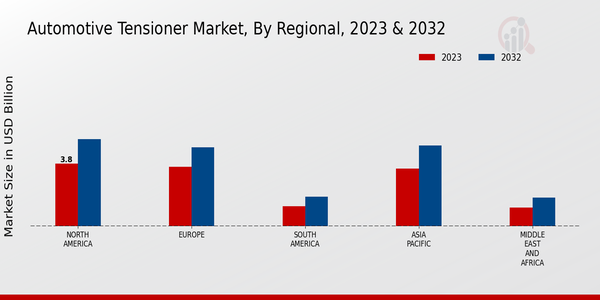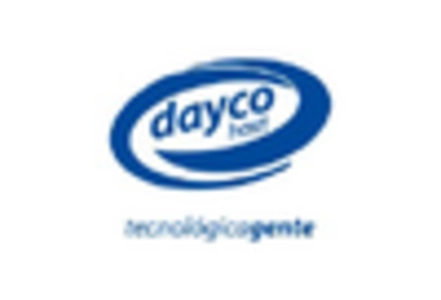Market Growth Projections
The Global Automotive Tensioner Market Industry is poised for substantial growth in the coming years. Projections indicate that the market will expand from 6.01 USD Billion in 2024 to 9.06 USD Billion by 2035, representing a significant upward trajectory. This growth is underpinned by a compound annual growth rate (CAGR) of 3.8% from 2025 to 2035. Such figures illustrate the increasing reliance on automotive tensioners as essential components in modern vehicles, driven by advancements in technology, regulatory pressures, and evolving consumer preferences. The market's expansion reflects a broader trend towards enhanced vehicle performance and sustainability.
Growing Demand for Fuel Efficiency
The Global Automotive Tensioner Market Industry experiences a surge in demand driven by the increasing emphasis on fuel efficiency in vehicles. As automotive manufacturers strive to meet stringent emissions regulations, the integration of advanced tensioners becomes crucial. These components enhance the performance of timing belts and chains, thereby optimizing engine efficiency. In 2024, the market is projected to reach 6.01 USD Billion, reflecting the industry's commitment to sustainability. The trend towards hybrid and electric vehicles further propels the need for innovative tensioning solutions, as these vehicles often require more sophisticated systems to manage power delivery effectively.
Increase in Vehicle Production and Sales
The Global Automotive Tensioner Market Industry is significantly influenced by the increase in vehicle production and sales worldwide. As global economies recover and consumer confidence rises, the automotive sector witnesses a robust demand for new vehicles. This trend is particularly evident in emerging markets, where rising disposable incomes lead to higher vehicle ownership rates. Consequently, the demand for automotive components, including tensioners, escalates. The market is anticipated to reach 9.06 USD Billion by 2035, underscoring the correlation between vehicle production and the need for reliable tensioning systems that ensure optimal engine performance and longevity.
Regulatory Compliance and Emission Standards
Regulatory compliance and stringent emission standards are key drivers of the Global Automotive Tensioner Market Industry. Governments worldwide are implementing more rigorous regulations to curb vehicle emissions, compelling manufacturers to adopt advanced technologies in their engines. Tensioners play a critical role in ensuring that timing systems operate efficiently, thereby reducing emissions. As a result, automotive companies are increasingly investing in high-quality tensioners to meet these regulations. This trend not only enhances vehicle performance but also aligns with global sustainability goals, further propelling the market's growth as manufacturers seek to comply with evolving standards.
Rising Popularity of Electric and Hybrid Vehicles
The rising popularity of electric and hybrid vehicles significantly impacts the Global Automotive Tensioner Market Industry. As consumers become more environmentally conscious, the demand for vehicles that reduce carbon footprints increases. Electric and hybrid vehicles often require specialized tensioning systems to manage their unique powertrains effectively. This shift towards electrification is expected to drive innovation in tensioner design and functionality, creating new opportunities for manufacturers. The market's growth trajectory suggests that by 2035, the demand for automotive tensioners will continue to evolve, reflecting the industry's adaptation to changing consumer preferences and technological advancements.
Technological Advancements in Automotive Components
Technological advancements play a pivotal role in shaping the Global Automotive Tensioner Market Industry. Innovations in materials and design have led to the development of lightweight and durable tensioners that improve vehicle performance. For instance, the introduction of composite materials reduces weight while enhancing strength, which is particularly beneficial in high-performance vehicles. As manufacturers adopt these advanced technologies, the market is expected to grow steadily, with a projected CAGR of 3.8% from 2025 to 2035. This growth is indicative of the industry's shift towards more efficient and reliable automotive components, aligning with consumer expectations for enhanced vehicle performance.




















Leave a Comment